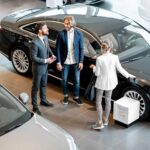
Table Of Contents
- Identifying the Product: What Are You Selling?
- Who Buys Auto Parts?
- How to Sell Auto Parts the Right Way?
- E-commerce Platforms for Selling Auto Parts
- The Difference Between OEMs and Third Parties
- The Best Way to Sell Auto Parts Online
- Preparing Your Store for Launch
- Final Thoughts
- FAQs of Selling Auto Parts Online
You’re in the right place if you have a knack for cars and a passion for turning your automotive knowledge into a profitable venture. In today’s digital age, selling car parts online has become a lucrative business opportunity for automotive enthusiasts and entrepreneurs. Whether you have a collection of spare parts or access to reliable suppliers, there’s a vast market waiting for you. This comprehensive guide will take you through every aspect of selling auto parts online.
Identifying the Product: What Are You Selling?
Before diving into selling car parts online, it’s crucial to understand what you’ll be offering to your potential customers. Auto parts encompass a wide range of components, from essential internal functions to enhancing the appearance and functionality of a vehicle with accessories.
As you embark on the exciting journey of selling auto parts online, you must have a crystal-clear vision of the products that will fill your virtual storefront. Auto parts comprise many components, each serving a specific purpose in the automotive ecosystem. Let’s take a deep dive into the critical categories of auto parts you’ll be offering:
Shocks, Struts, and Hubcaps
Shocks and struts are vital suspension components that ensure a smooth and safe vehicle ride. On the other hand, hubcaps serve aesthetic and functional purposes, covering the wheel hub and protecting it from dirt and debris. These items are in demand for routine maintenance and upgrades.
These sturdy components work tirelessly to provide a comfortable and controlled ride, absorbing the jolts and vibrations of the road. Meanwhile, hubcaps play a dual role—adding a touch of style to a vehicle’s wheels while safeguarding the wheel hub from dust and debris. These parts are in constant demand for regular maintenance, ensuring that cars stay comfortable and safe on the road.
Tires
Tires are the most frequently replaced auto parts. Over time, they must be returned as they wear out for safety reasons. They bear the brunt of daily commutes, enduring the wear and tear of countless miles on the asphalt. Offering a diverse selection of tires, ranging from all-season to specialized models, can attract a wide and varied customer base. Whether your customers seek improved traction for inclement weather or high-performance tires for spirited drives, tires are a cornerstone of the auto parts industry.
External Components
The external components of a vehicle include bumpers, grilles, side mirrors, and other parts that contribute to a car’s appearance and protection. These components often need replacement due to accidents or general wear and tear.
These parts not only contribute to a car’s not only affect its appearance but also its function protection. Over time, they can accumulate damage from minor fender benders or succumb to general wear and tear. Providing a comprehensive range of high-quality external components ensures customers can restore their vehicles’ visual appeal and safety.
Internal Components
Internal components encompass critical parts such as spark plugs, transmissions, and cylinders. These are essential for a vehicle’s proper functioning, and car owners often need replacements or upgrades. Knowing what it is now makes understanding the products you’ll be selling easier. It’s time to explore your potential customers.
While external components enhance a vehicle’s aesthetics, internal components are the unseen champions that power a car’s engine and ensure seamless operation. This category encompasses critical parts such as spark plugs, transmissions, cylinders, and more. Car owners frequently require replacements or upgrades for these components to maintain their vehicles’ reliability and performance. By offering a well-rounded selection of internal components, you cater to your customer base’s do-it-yourself (DIY) enthusiasts and professional mechanics.
Who Buys Auto Parts?
Understanding your target audience is vital to selling auto parts online successfully. Your customers can be categorized into two primary groups:
Vendors, Auto Shops, and Garages
Many businesses in the automotive industry rely on a steady supply of auto parts to serve their customers. Mechanics, auto repair shops, and garages are your potential bulk buyers. They require a reliable source for high-quality parts to maintain their reputation and satisfy customers.
The End User
Individual car owners and enthusiasts also form a significant portion of your customer base. They may be looking for specific parts to maintain their vehicles, customize them, or enhance their performance. Understanding the needs and preferences of individuals for an online business to be successful is essential to have customers.
How to Sell Auto Parts the Right Way?
Now that you’ve identified your product and potential customers, let’s explore the various avenues for selling auto parts online and the best strategies to succeed.
Set Up Your Online Store
Creating your e-commerce website selling auto parts gives you complete control over your business. You can design the site according to your brand, set your pricing, and offer personalized customer service. Platforms like Shopify, WooCommerce, or Magento make it easy to establish your online store.
eBay
Millions of people buy and sell items on eBay. Users acknowledge and sell various products, including auto parts. Listing your items on eBay provides visibility to a massive audience, and listing your product using an auction-style or fixed-price method is possible.
The Amazon Online Marketplace
Among the e-commerce giants is Amazon, which offers its customer base a wide range of products and services. Setting up a seller account on Amazon allows you to reach a broad audience looking for auto parts. You can list your products individually or use Shipping, packaging, and storage are handled by Amazon’s Fulfillment by Amazon (FBA) service.
A Combination of All Three Channels
To maximize your reach and sales potential, consider using a combination of your online store, eBay, and Amazon. This approach allows you to tap into diverse customer groups and diversify your income streams.
E-commerce Platforms for Selling Auto Parts
To streamline your online auto parts business, you’ll want to leverage e-commerce platforms that offer specific features tailored to the industry. It would be best if you looked for the following features:
Vehicles Can Be Filtered
Customers can filter auto parts depending on the vehicle’s make, model, and year. This helps them find the exact features they need quickly.
Search with Facets
Implement robust search functionality with facets and filters, making shopping more accessible for users. By narrowing down their choices, customers can find what they are looking for in attributes like brand, price range, and condition.
Programs That Reward Loyalty
Consider implementing rewarding repeat customers with loyalty programs. Make every purchase worth points, discounts, or exclusive deals, encouraging customers to return to your store.
The Chatbot
A chatbot can provide instant customer support, answering common questions and assisting with product inquiries. Consequently, the user experience is improved and helps convert visitors into buyers.
Gateways for Payments
Provide multiple payment options to accommodate various customer preferences. Secure payment gateways inspire trust and confidence in your online store.
Capabilities in B2B
To cater to businesses like auto repair shops and garages, ensure that your platform supports B2B transactions. Offer bulk pricing, invoicing, and account management features.
The Difference Between OEMs and Third Parties
When selling auto parts online, it’s essential to understand the distinction between Original Equipment Manufacturers (OEMs) and third-party manufacturers. This knowledge will influence your product selection and pricing strategy. These two entities represent divergent paths in sourcing and selling auto parts. Let’s delve into the intricacies of this pivotal contrast:
Original Equipment Manufacturer (OEM)
The same company manufactures OEM parts companies that produced the original parts used in vehicles when they were first assembled. The quality and compatibility of their products are well-known with specific vehicle models. Selling OEM parts can be lucrative but often have a higher price tag.
Original Equipment Manufacturers, often called OEMs, are the entities responsible for crafting the components integrated into vehicles during their initial assembly. These parts are replicas of those initially installed in cars by renowned automakers. As a result, they are esteemed for their precision, quality, and compatibility with specific vehicle models.
Car owners who opt for OEM parts do so with the conviction that they are acquiring components that match the exact specifications of their vehicles. However, it’s worth noting that OEM parts often come with a premium price tag, reflective of their exceptional quality and direct ties to the original manufacturer.
The Third Party
Different vehicle models are compatible with aftermarket parts manufactured by third parties. Consumers who are concerned about costs often prefer these parts over OEM alternatives. However, quality can vary between different third-party brands.
On the flip side, third-party manufacturers produce aftermarket parts designed to fit a broad spectrum of vehicle makes and models. These aftermarket parts are often more budget-friendly than their OEM. They are popular because of their cost-effectiveness for consumers on a budget.
While third-party manufacturers may have a different level of brand recognition than OEMs, they provide a versatile array of auto parts that cater to a broad audience. These parts can be viable for those who want quality and performance without compromising affordability. Third-party functions can, however, differ significantly between manufacturers and brands regarding quality and consistency.
In summary, the difference between OEMs and third parties boils down to the origins and specificity of the auto parts. OEMs offer precision and compatibility, closely tied to the original vehicle manufacturer, while third-party manufacturers provide versatility and affordability. As you navigate the landscape of selling auto parts online, understanding these distinctions is pivotal in shaping your product offerings and pricing strategies to meet the diverse needs of your customers.
The Best Way to Sell Auto Parts Online
Now that you have a solid understanding of the auto parts market and the tools at your disposal, here’s a step-by-step guide on the best way to sell auto parts online successfully:
Get in Touch with Mechanics and Car Enthusiasts First
Start by contacting local mechanics, auto repair shops, and car enthusiasts in your network. Bulk orders and referrals can be obtained by establishing relationships with these individuals. Attend automotive events and join online to expand your network. Join car enthusiast forums and social media groups.
Research Your Competitors
Thoroughly research your competitors to understand better their pricing, product offerings, and customer service. Identifying gaps in the market can provide you with products and services that will help you position your business uniquely while others don’t.
Request Quotes from Suppliers
Identify reliable suppliers or wholesalers who can provide a steady auto parts supply—request quotes from multiple suppliers to compare prices, quality, and terms. The importance of good relationships with suppliers cannot be overstated deals and priority access to new products.
Send in Purchase Orders (POs)
Once you’ve selected your suppliers, start sending in purchase orders (POs) for the products you want to stock. Keep track of your inventory carefully to ensure you have enough essential items.
Build Your Site Now
If you’re setting up your online store, invest time and effort into creating a user-friendly website. Ensure that it’s mobile-responsive, loads quickly, and provides a seamless shopping experience. A product’s image and description should be high quality to ensure conversions.
Get Your Site Connected to Amazon, eBay, and Google Shopping.
If you expand your reach through marketplaces like Amazon and eBay, integrate your online store with these platforms. This synchronization ensures consistent product listings, inventory, and pricing across all channels.
Item Shipping Is Completed
Implement efficient shipping processes to fulfill orders promptly. We offer standard and expedited shipping options, so you can choose what works for you to accommodate various customer preferences. Provide tracking information and excellent customer support to keep buyers informed and satisfied.
Preparing Your Store for Launch
The pivotal moment in your journey of selling auto parts online is the launch of your virtual storefront. This stage is where all your meticulous planning and hard work come to fruition. Preparing your store for a successful launch involves critical steps that will set the tone for your business and lay the foundation for future growth. Here’s an in-depth look at how to prepare your online auto parts store for its grand debut:
Determine Your Niche
Ship standard and expedited packages and multiple shipping options define your niche within the vast auto parts market. Identify a place within the auto parts marketing that you can specialize in. Whether it’s specific vehicle brands, types of parts, or a unique selling proposition (USP), having a niche can help you stand out in a competitive market. A well-defined place attracts a targeted customer base and positions you as an expert in that segment.
Locate Manufacturers or Distributors
Establish relationships with manufacturers or distributors that align with your niche and product offerings. Securing reliable sources for high-quality auto parts is essential to ensure consistent stock availability. It is possible to gain access to new products and favorable terms by building solid partnerships with suppliers.
Describe Each Step in Depth
Create comprehensive product listing information on specifications, compatibility, and descriptions. Clear and informative product pages attract customers and reduce the likelihood of returns. Purchasing with confidence is more likely to happen if a customer is well-informed.
Obtain Professional Images
Ensure your products are photographed professionally and showcase your auto parts in the best light. High-quality images enhance the credibility of customers, and will be able to make informed purchases through your online store. Ensure that your product images provide multiple angles and display critical features.
Optimize for SEO
Photograph your products professionally to showcase your auto parts in the best light. Optimize your website for SEO, one of the best ways to attract customers to your dealership website, using Automotive SEO.High-quality images enhance the credibility of giving customers the information they need to purchase from your online store. Ensure that your product images provide multiple angles and display critical features.
Set Competitive Prices
Pricing contributes to the attraction of talented customers. Research the market and competitors to price your products competitively and ensure profitability for your business at the same time. It can succeed through competitive pricing to stand out in a crowded market.
Establish a Marketing Plan
Develop a comprehensive marketing plan encompassing various strategies, including automotive social media marketing, email campaigns, content marketing, and paid advertising. Building a robust online presence and brand awareness is essential for attracting your initial customers and sustaining growth.
Provide Excellent Customer Service
Exceptional customer service can set your online auto parts store apart. Customer inquiries should be promptly addressed, and concerns should be addressed within a reasonable amount of time to strive for 100% customer satisfaction. You are more likely to grow your business by having happy customers who become dedicated patrons and advocates.
Test Your Website
Checkout should be thoroughly tested before launching your website, payment gateways, and contact forms. Ensure that everything works smoothly to provide a seamless shopping experience.
Launch with a Bang
When you’re confident that your online store is primed for success, launch it with a well-planned promotional campaign. Offer special deals, discounts, or exclusive offers to attract initial customers and generate excitement around your brand. A strong launch can create momentum that propels your business forward.
Preparing your store for launch is a pivotal step in your journey as an online auto parts retailer. The effort you invest in defining your niche, sourcing quality products, optimizing your website, and providing exceptional customer service will lay the groundwork for a successful and enduring online business. Remember that the launch is just the beginning; ongoing dedication and adaptation to market trends will drive your store’s continued growth and success.
Final Thoughts
Selling auto parts online can be a passion. Individuals will find this venture rewarding automobiles and a business-minded approach. You can build a successful online auto parts business by identifying your product niche and implementing a marketing and sales strategy targeting your target audience.
Automotive Digital Marketing has created a world where growth and expansion are vast. Remember to stay updated with industry trends, continuously improve your online store, and adapt to the evolving needs of your customers. With dedication and a commitment to excellence, you can carve out your niche in the competitive world of selling car parts online.
In the dynamic world of selling car parts online, success hinges on your ability to navigate a multifaceted landscape with precision and insight. Armed with a clear understanding of the products you offer, a deep insight into your target audience, and a robust strategy to reach them, your journey as an online auto parts retailer is poised for growth and profitability.
As you embark on this entrepreneurial voyage, remember that auto parts are more than mere components; they are the lifeblood of vehicles, ensuring their functionality, safety, and aesthetics. Your role in providing these essential parts to both automotive enthusiasts and businesses is crucial, and it comes with immense potential.
By identifying the categories of auto parts you wish to specialize in, building solid relationships with suppliers, and embracing the power of e-commerce platforms, you position yourself to thrive in this competitive industry. Your strategies, such as setting up your online store, leveraging popular marketplaces like eBay and Amazon, and maintaining a comprehensive inventory, will determine your success.
Furthermore, understanding the nuances between OEM and third-party parts empowers you to cater to a diverse customer base, offering choices that align with various preferences and budgets. This knowledge positions you as a trusted resource in the eyes of your customers, fostering brand loyalty and repeat business.
Preparing your online store meticulously for launch is the pivotal moment where all your hard work culminates. Your ability to define a niche, source high-quality products, optimize for search engines, and provide excellent customer service will be the cornerstones of your success.
In closing, selling car parts online is not merely a business endeavor; it’s a journey fueled by passion, innovation, and an unwavering commitment to excellence. Embrace the challenges, adapt to evolving market trends, and stay customer-centric. With dedication, strategic thinking, and a love for all things automotive, your venture into selling auto parts online can drive you toward enduring success in this ever-rewarding industry.
FAQs of Selling Auto Parts Online
Are there any platforms that are best for selling auto parts online?
While several platforms are suitable for selling auto parts online, some popular ones include eBay and Amazon. Set up your e-commerce store using platforms like Shopify, WooCommerce, or Magento. It would help to consider your business goals and target audience to make the right decision.
What is the best way to sell used car parts online?
Selling used car parts online can be profitable. To succeed, accurately describe the condition of the details, provide clear photos, and offer competitive pricing. Utilize online marketplaces like eBay, specialized auto parts forums, and social media to reach potential buyers.
Are self-hosted websites better for selling auto parts than eBay?
Self-hosted websites offer greater control over your business and brand but require more effort in marketing and building an audience. Unlike eBay, eBay provides access to a wide range of products and a vast customer base but comes with fees. It is sometimes best to combine the two approaches, depending on your business strategy.
What laws should I know before selling auto parts online?
Laws and regulations related to selling auto parts can vary by location. It’s essential to research and comply with local, state, and federal laws regarding the sale of auto parts, including safety standards and environmental regulations. Additionally, be aware of intellectual property rights and ensure that you have operating your business requires the appropriate licenses and permits.
To learn more about boosting sales in the automotive industry, explore our GoAutomotive Marketing website.





